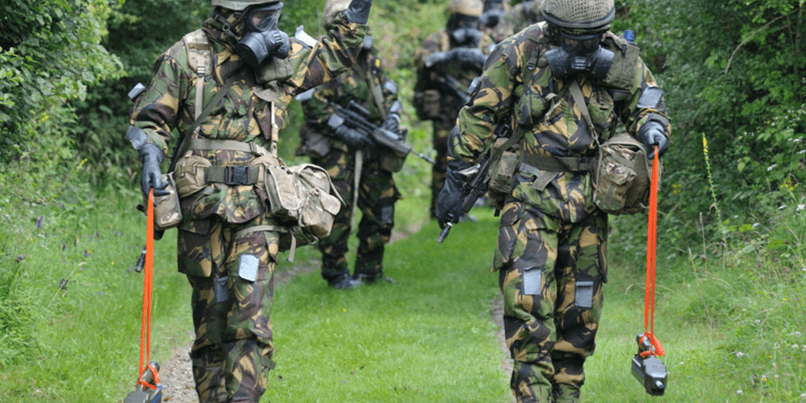 One of the primary drivers of modern chemical warfare agent (CWA) training is the need to be prepared for complex and unpredictable terrorist-related incidents, but that in itself means there are some unique challenges for instructors to overcome.
One of the primary drivers of modern chemical warfare agent (CWA) training is the need to be prepared for complex and unpredictable terrorist-related incidents, but that in itself means there are some unique challenges for instructors to overcome.
In the majority of cases in CBRNe warfare, for example, the 'enemy' that you're likely to be up against may be an invisible, or near invisible one.
It is widely accepted that effective CBRNe training hinges on the opportunity for personnel to experience, and train for, a range of chemical, biological or radiological threats in the safest possible way.
Balancing realism with environmental safety
These sorts of challenges place significant pressure on CBRNe instructors to create training scenarios that deliver the highest level of realism with the least amount of environmental impact.
Traditionally, group-based Live Agent Training (LAT) has offered CBRNe personnel a very special opportunity to achieve combat "readiness" by being exposed to the characteristics of a live threat "up close."
But while LAT offers the highest degree of realism, it is a training method that is often fraught with regulatory burdens, environmental restrictions and excessive administrative effort.
LAT is also not a one-size-fits all solution. The highly toxic nature of the sources used means that these types of exercises are likely to be best suited to specialist live-agent facilities. They will also require stringent environmental analysis that takes into account any variations in the time of year, weather conditions or wind direction.
The use of simulants
Training with the use of simulant agents (SAT), while it is not as comprehensive as LAT, is often considered the nearest possible to the "real thing." However, the use of simulant sources can bring with it its own set of obstacles.
Even when simulant agents are managed in the smallest of quantities, they are by no means harmless. Many of the chemicals used as simulant sources are non-biodegradable which means here is the very real risk of harm to the environment, flora and wildlife as well as the associated problems that can come from saturating a training area.
And then of course, there is the substantial human health and safety risk that working with hazardous chemicals presents to trainees, their instructors and others who may be located in the immediate area.
Training using simulator detectors
Dedicated CBRNe simulation instruments, provide an extremely workable solution to LAT and SAT safety concerns by replacing the use of real agents, or simulant sources, with safe and environmentally friendly electronic alternatives.
Realistic training exercises can then take place in a truly unlimited variety of scenarios or settings (including the most confined of spaces) without the need to disperse any form of hazardous substance. And as neither live agents or simulant sources are required, there are also no adverse impact on the participants, bystanders or the environment.
For instructors there is also the advantage of being able to portray a wide variety of complex scenarios in a realistic but safe setting.
Establishing environmental provenance
Just as the environmental sustainability of the CBRNe training product itself is vital, it is also important that the company that supplies the training solution is committed to ensuring that their product design, manufacture and operations are carried out with due regard for environmental impact.
ISO 14001:2015, for example, is the group of internationally-agreed standards developed by the ISO Technical Committee and its sub-committees, that provides an invaluable framework within which the manufacturers of simulator detectors can seek to continually improve and evolve their processes.
The aim of ISO certification is to encourage companies to develop their environmental sustainability by considering all the environmental issues that are pertinent to their operation - whether it be the practicalities of water and sewage disposal, waste management, air pollution, soil contamination or climate change mitigation.
As with all ISO standards, ISO 14001:2015 is driven by a commitment to continual organisational improvement. And it encourages companies to give prominence to the ways in which they approach environmental management within their strategic planning processes.
While achieving ISO 14001:2015 certification may not be a deal-breaker when it comes to procuring simulator detector equipment, it does nonetheless communicate a clear signal to prospective customers that the priorities outlined in the ISO standard have been recognised, understood and acted upon by that manufacturer.




